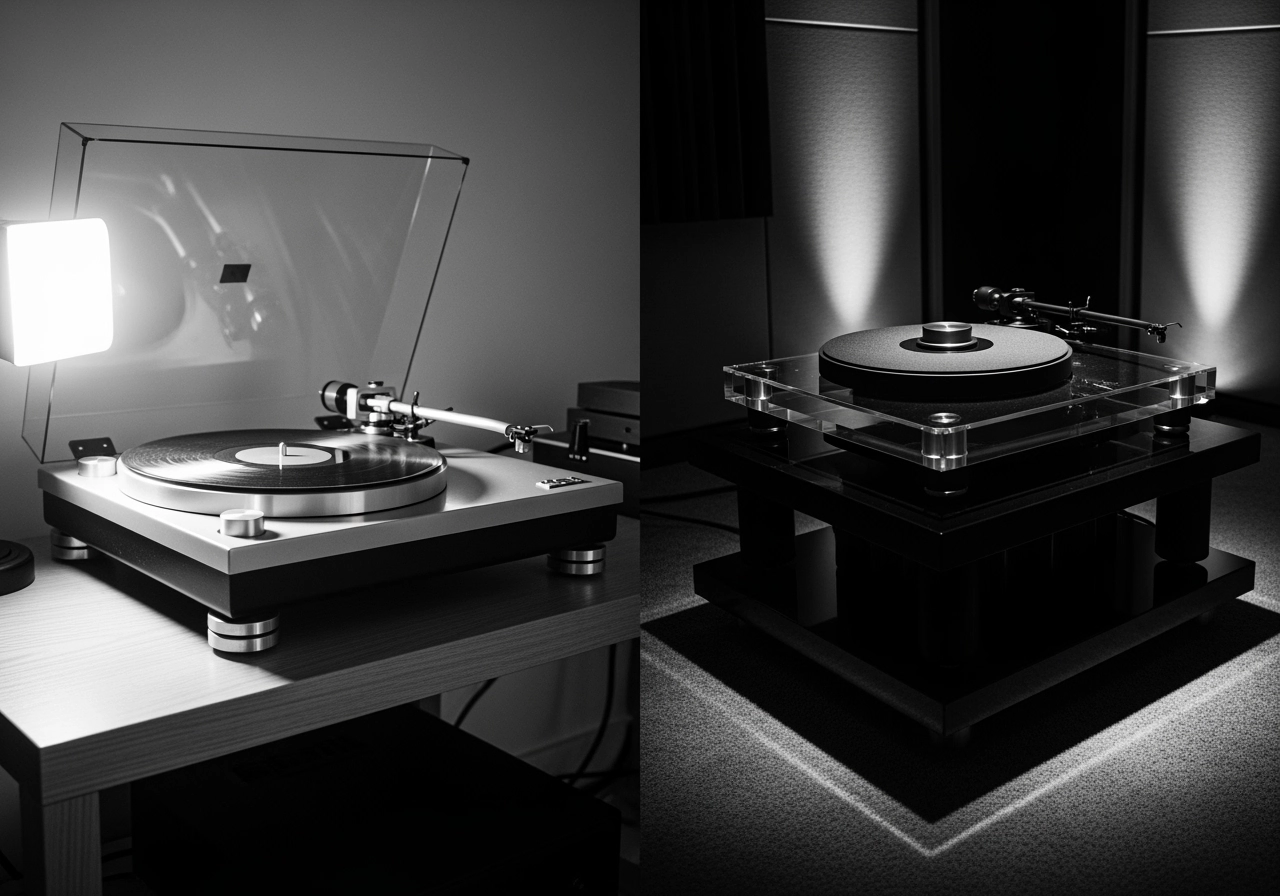Achieve Sonic Clarity at Any Price Point: A Buyer’s Guide
Unwanted resonance and vibration are the silent saboteurs of high-fidelity sound. They manifest as a loss of detail, muddy bass, and a collapsed soundstage, robbing your music of its life and vibrancy. While a complete system overhaul is often out of reach, investing in targeted isolation accessories can provide an immediate and dramatic improvement to your listening experience. This guide breaks down the best isolation accessories for every budget, proving that you don’t need to spend a fortune to unlock your system’s true potential.
The Science of Sound Isolation: How Accessories Work
Audiophile isolation accessories are designed to do one of two things: decouple or damp. Decoupling accessories, such as isolation feet, act as a barrier to prevent vibrations from traveling between surfaces (e.g., from the floor to your audio rack, or from the rack to your component). Damping accessories, like platter mats, absorb and dissipate vibrational energy as heat, preventing it from coloring the audio signal itself. The best products often combine both principles to provide maximum effectiveness.
Tier 1: Entry-Level Solutions (Under $100)
Even on a tight budget, you can make a significant difference. The goal at this level is to address the most critical sources of vibration with simple, effective, and affordable products.
- Cork or Rubber-Cork Turntable Mats: Replacing the standard felt mat on your turntable with a cork or cork-rubber composite mat is a highly effective and inexpensive upgrade. These materials are excellent at damping platter resonance, leading to a quieter background and more defined sound.
- Vibration Damping Pads: Simple, viscoelastic pads or pucks can be placed under your components’ existing feet. Products like the MITMAT Footers offer a cost-effective introduction to their innovative microcell technology, which uses a matrix of air bubbles to dissipate resonance as heat. They can be used under a turntable, an amplifier, or even speakers.
- DIY Solutions: For the truly budget-conscious, a simple slab of slate, granite, or even a butcher block can serve as a damping platform under your components. While not as effective as engineered solutions, this DIY approach provides a solid, heavy surface to absorb some vibration.
Tier 2: Mid-Range Upgrades ($100 – $500)
This is the sweet spot for many audiophiles, where a modest investment can yield substantial sonic returns. Products in this category often feature advanced engineering and higher-quality materials.
- Dedicated Isolation Feet: For a noticeable step up, look for dedicated isolation feet that replace your components’ stock feet. Brands like IsoAcoustics and Soundeck offer feet with sophisticated damping mechanisms that effectively decouple the component from its surface.
- High-Performance Isolation Platforms: A dedicated isolation platform is a game-changer, especially for sensitive components like turntables or tube preamplifiers. The MITMAT Foundation Isolation Base is an excellent example in this category. It’s engineered with the brand’s proprietary microcell technology to provide a stable, non-resonant surface that drastically reduces unwanted energy, leading to a cleaner, more detailed soundstage.
- Specialized Platter Mats: The mid-range tier includes a variety of advanced platter mats made from materials like acrylic or specialized composites. The MITMAT Platter Mat is a standout, designed to reduce low-frequency resonance and mid-to-high-frequency platter ringing. This can be particularly transformative for vinyl playback, revealing nuances and clarity previously masked by vibration.
Tier 3: High-End Audiophile Solutions ($500+)
At the high end, products are engineered with exotic materials and cutting-edge technology to achieve the absolute lowest noise floor and maximum sonic transparency. These are for enthusiasts seeking to extract every last ounce of performance from their system.
- Magnetic and Ceramic Isolation Devices: Products from brands like Magico and Stillpoints use technologies like magnetic levitation or ceramic ball bearings to almost completely eliminate the physical connection between components and their environment. The result is an ethereal, “floating” soundstage with unmatched precision and clarity.
- Fully Engineered Isolation Racks: At the top of the spectrum are complete isolation racks from brands like Stillpoints or Grand Prix Audio. These are not just shelves; they are multi-tiered systems where each shelf is independently isolated to prevent cross-contamination of vibrations between components.
- Integrated Solutions from MITMAT: The MITMAT MITKIT value pack offers a high-value, high-performance solution that integrates multiple accessories. It combines a platter mat, an isolation base, and a set of footers, providing a complete resonance management system for a key component, all at a bundled price. This is a great way to experience a holistic approach to vibration control.
Q&A: Making the Right Isolation Choice
Q: Which component should I isolate first? A: Start with the most sensitive component in your system, which is typically your turntable. Its delicate stylus and cartridge are extremely susceptible to vibration. After that, focus on your preamplifier or any tube-based components.
Q: Do isolation accessories really make a difference you can hear? A: Yes. While some audiophile accessories offer subtle changes, the effect of proper isolation is often immediate and easily discernible. You will typically hear a “blacker” background, tighter bass, and a more focused and open soundstage.
Q: Can I use isolation feet on top of an isolation platform? A: Yes, this can create a multi-layered defense against vibration and is a common practice in high-end systems. For example, placing a turntable on a MITMAT Foundation and then using specialized feet under the turntable itself provides a double layer of decoupling.
Q: Are all damping materials the same? A: No. While many materials can absorb vibrations, their effectiveness and the frequency ranges they target vary. Materials like the microcell foam used by MITMAT are specifically engineered to dissipate a broad spectrum of resonances, providing a more comprehensive solution than simple rubber or foam.
Q: How do I know if an isolation accessory is right for me? A: The best way is to try it. Look for dealers that offer a return policy or a listening session. Many audiophiles also rely on reviews from reputable publications and forums to guide their purchasing decisions.
